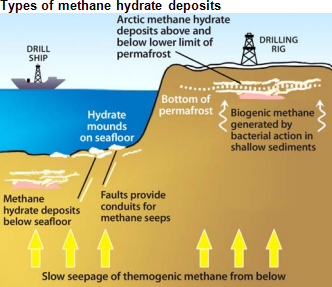It may not be the headline star of the climate change discussion, but nitrous oxide (N2O) is still a potent greenhouse gas – and now it looks like we may have underestimated how much is being released. A new study has identified the thawing Siberian permafrost as a huge, previously unknown source of N2O.
Carbon dioxide is the primary greenhouse gas of concern, followed by methane and then nitrous oxide. But don’t discount the bronze medallist there – what N2O lacks in concentration it more than makes up for in potency. Pound for pound, nitrous oxide is a 298 times stronger warming agent than carbon dioxide, and it can degrade the ozone layer too.
Worse still, its saving grace – that at least there isn’t as much of it up there – may not hold true for long either. A recent report found that we may be underestimating levels of N2O emissions from agriculture, where it’s produced as a by-product of nitrogen-rich fertilizers. Oceans also emit a decent chunk that’s growing as human activity makes the waters more acidic.
And now the Siberian permafrost can be added to the list of increasing sources. New research led by scientists at the University of Eastern Finland has found that nitrous oxide emissions from a type of permafrost known as Yedoma are growing faster than expected.
A researcher measures nitrous oxide emissions from the Yedoma permafrost in East Siberia Johanna Kerttula
Yedoma permafrost contains a huge amount of organic material, and covers more than 1 million sq km (386,000 sq miles) across Siberia, Alaska and Canada. Previously it was assumed that the nitrogen cycle in these cold soils was a slow process that wouldn’t result in significant nitrous oxide emissions, but for the new study the team measured those emissions at different points along the Lena and Kolyma rivers in East Siberia.
The team found that the most recently thawed Yedoma permafrost did start off producing very low N2O emissions, but within a few years those emissions accelerated drastically. Eventually they were found to be emitting between 10 and 100 times more nitrous oxide than normally expected from other permafrost soils.
On closer inspection, the researchers uncovered the mechanism behind this increase. As the sediments dry out and stabilize after thawing, the microbial communities living in them change. The population of microbes that produce nitrous oxide precursors grows, while those that consume the gas shrinks.
Further study will be needed to asses the extent of these emissions and incorporate their impact into climate models.
The research was published in the journal Nature Communications.
Source: University of Eastern Finland
https://newatlas.com/environment/permafrost-nitrous-oxide-emissions/
